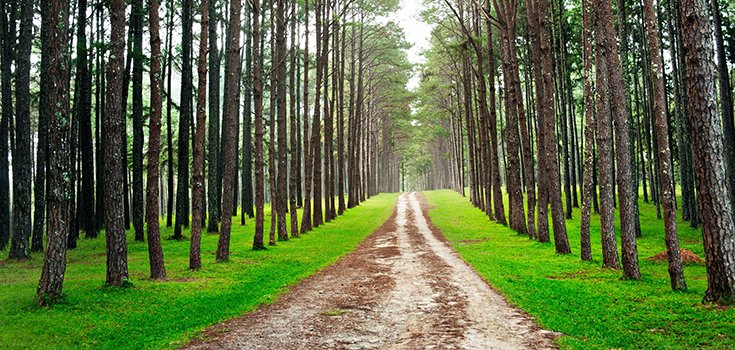Improve Your Health by Doing This for 30 Minutes

I always say – and I’ve written it many times – that gardening is a great antidepressant. As beautiful as nature is to look at, there is something deeply healing about engaging with it.
But if you’re not into getting dirt under your fingernails or dealing with spiders, you can still reap the benefits Mother Nature has to offer. There are so many studies that point to this, I hardly know where to begin.
For starters, a study published in 2013 showed that outdoor recreation was associated with higher mental well-being among military veterans.
Another study published in July of 2015 revealed that people who took a walk in nature spent less time ruminating over negative self-talk compared with people who walked along a busy California street.
Most recently, researchers at the University of Queensland (UQ) and the Australian Research Council for Centre of Excellence for Environmental Decisions (ARC CEED) found that simply wandering around a park for a half-hour can improve physical and mental health. The findings are significant, as this is the first study to recommend a minimum amount of time people should be spending outdoors.
Richard Fuller, an associate professor at UQ, said in a press release:
“We’ve known for a long time that visiting parks is good for our health, but we are now beginning to establish exactly how much time we need to spend in parks to gain these benefits. We have specific evidence that we need regular visits of at least half an hour to ensure we get these benefits.”
For the study, published in Nature Scientific Reports, researchers analyzed data from 1,538 residents of Brisbane City, Australia, comparing the amount of time they spent in nature with four health outcomes.
The team found that, overall, a longer duration spent in nature resulted in increased physical activity, and lower prevalence of high blood pressure and depression with an average of 30 minutes spent outside.
Based on their analysis, the researchers estimated that spending a minimum of 30 minutes outside could cut the number of depression cases by 7% and the number of high blood pressure cases by 9%.
Some 40% of Brisbane residents don’t visit a park or other outdoor space on a weekly basis, but the researchers don’t think it will be that hard to get people to do so.
Researcher Danielle Shanahan said:
“So how can we encourage people to spend more time in green space?
We need more support and encouragement of community activities in natural spaces. For example, the Nature Play programs in Queensland, Western Australia and South Australia provide heaps of ideas for helping kids enjoy the great outdoors.” [1]
She added:
“If everyone visited their local parks for half an hour each week there would be seven per cent fewer cases of depression and nine per cent fewer cases of high blood pressure.
Given that the societal costs of depression alone in Australia are estimated at 12.6 billion dollars a year, savings to public health budgets across all health outcomes could be immense.” [2]
Just being near a “green space” has been shown to be beneficial to mental and physical health.
People who live in urban areas are more prone to stress, depression, and other forms of mental illness. In fact, people who live in cities have a 20% higher risk of anxiety disorders, and a 40% higher risk of mood disorders than people who live in rural areas.
Parks are the most obvious way for urbanites to get out and enjoy nature, but urban gardening has exploded in popularity as more city dwellers have opted to use what little space they have to grow their own fruits and vegetables.
It’s good to know that even if you don’t have the time to devote to an urban garden, or a yard to sunbathe in, just strolling through a park once a week can boost your health in powerful ways.
Sources:
[1] UPI
